Nori no Tsukudani is a popular Japanese rice topping that offers a rich, savory taste of the sea. Although its dark appearance—derived from nori seaweed—might seem unfamiliar, you will likely be pleasantly surprised by its umami-rich flavor once you try it.
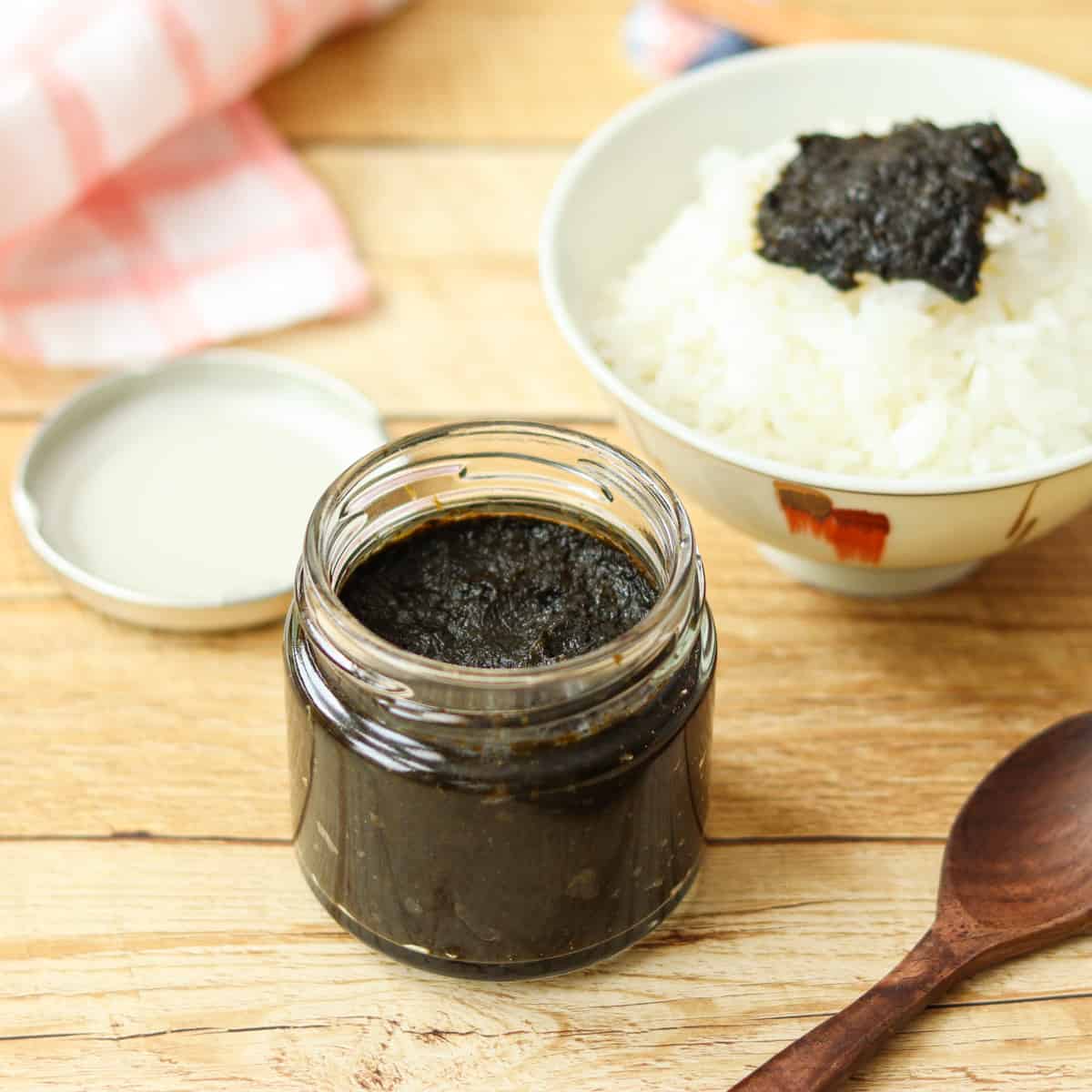
Jump to:
What is Nori no Tsukudani?
Nori no Tsukudani is a rice topping made by simmering nori seaweed in dashi stock with a sweet and savory blend of Japanese seasonings. "Nori" means nori seaweed, "no" indicates possession (connecting the preceding and following words), and "Tsukudani" refers to food cooked with soy sauce, sugar, and other seasonings until most of the liquid has evaporated. It is typically enjoyed in small portions with rice, much like spreading butter on bread.
Simmering nori seaweed enhances its flavor, and the addition of sweet and savory Japanese seasonings makes it a perfect complement to rice. In recent years, it has become popular in Japan not only as a rice topping but also as a spread for bread or as an ingredient in pasta sauce. Every variation is delicious, so feel free to try them all.
Nutrients in nori seaweed
The key ingredient in this rice topping, nori seaweed, is a staple food in Japan. It is known as the "vegetable of the sea," and it is so rich in nutrients that there is a saying: "Eating two sheets of nori a day is believed to keep the doctor away."
The primary nutrients found in nori include the following:
- Protein
- Dietary fiber
- Folic acid
- Vitamin B12
- Iodine
Nori no tsukudani is a delicious way to enjoy these nutrients, making it a highly recommended option for incorporating nori into your daily diet. Personally, I believe it is the most delicious food made primarily from nori.
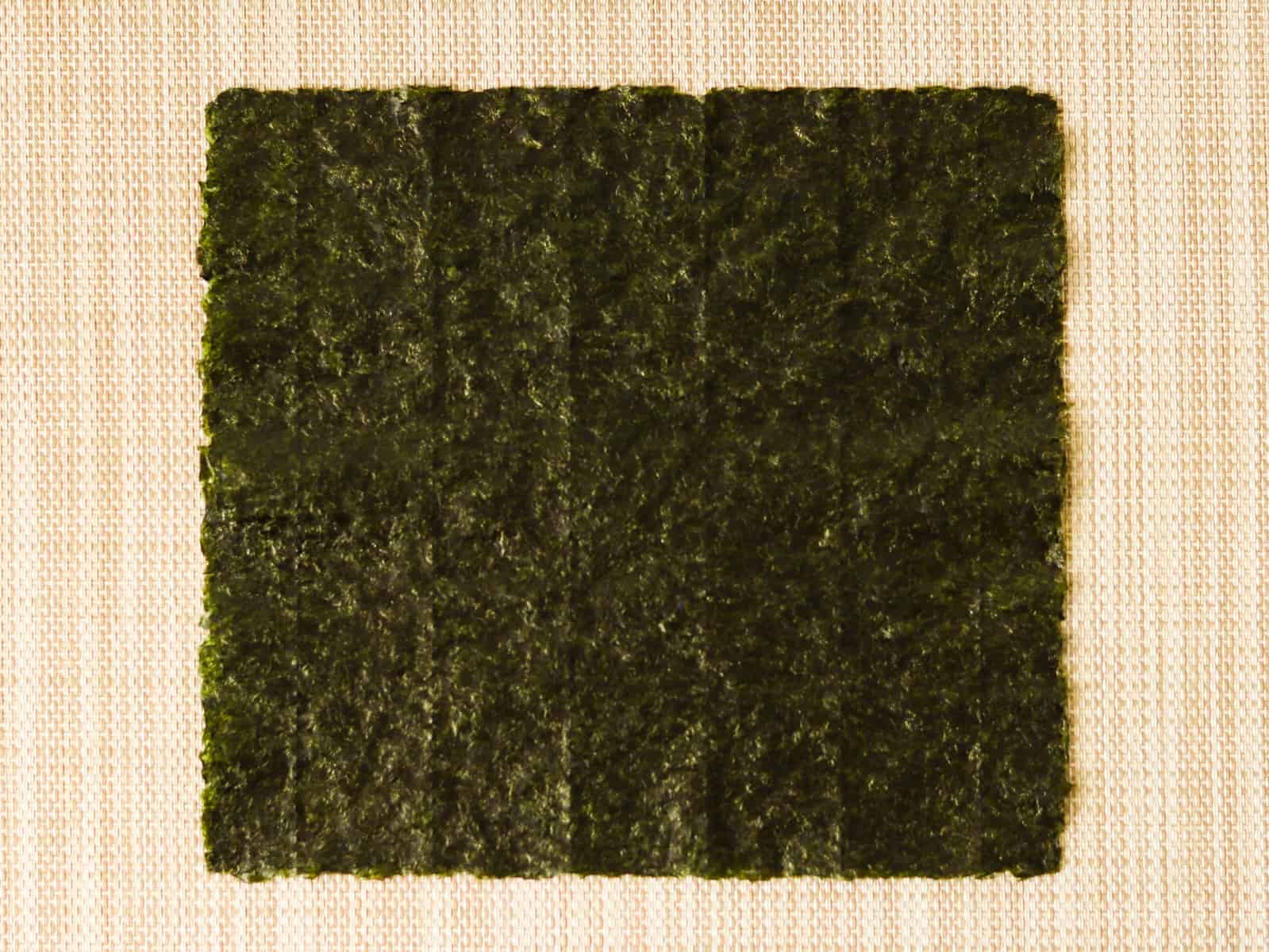
The benefits of making at home
Since this rice topping is very popular in Japan, you can probably find it at Asian markets. While the taste may vary slightly depending on the brand, it is generally delicious.
One of the benefits of making it at home is that you can adjust the flavor to your preference without including unnecessary additives, such as thickeners or stabilizers. The absence of these additives helps eliminate unwanted flavors, allowing you to enjoy a cleaner, more refined taste.
Another benefit is that you can use leftover nori seaweed that might have become slightly damp over time. In fact, in Japan, nori no tsukudani is often considered an ideal way to use up leftover nori from a previous purchase.
Choosing the right dashi
Nori no tsukudani is made by simmering nori seaweed in seasonings and dashi stock. In Japanese cuisine, awase dashi, which combines kombu dashi and bonito dashi, is commonly used as the dashi stock; however, for this rice topping, I recommend using shiitake dashi (mushroom stock) instead. While awase dashi also works well, shiitake dashi allows you to enjoy the umami flavor of the nori without any interference.
Making shiitake dashi is quite simple: just soak dried shiitake mushrooms in water (0.18 oz/5 g per ⅖ cup/100 ml of water) in the refrigerator for about 10 hours. Feel free to try it. For more details on How to Make Shiitake Dashi, please refer to the linked page.
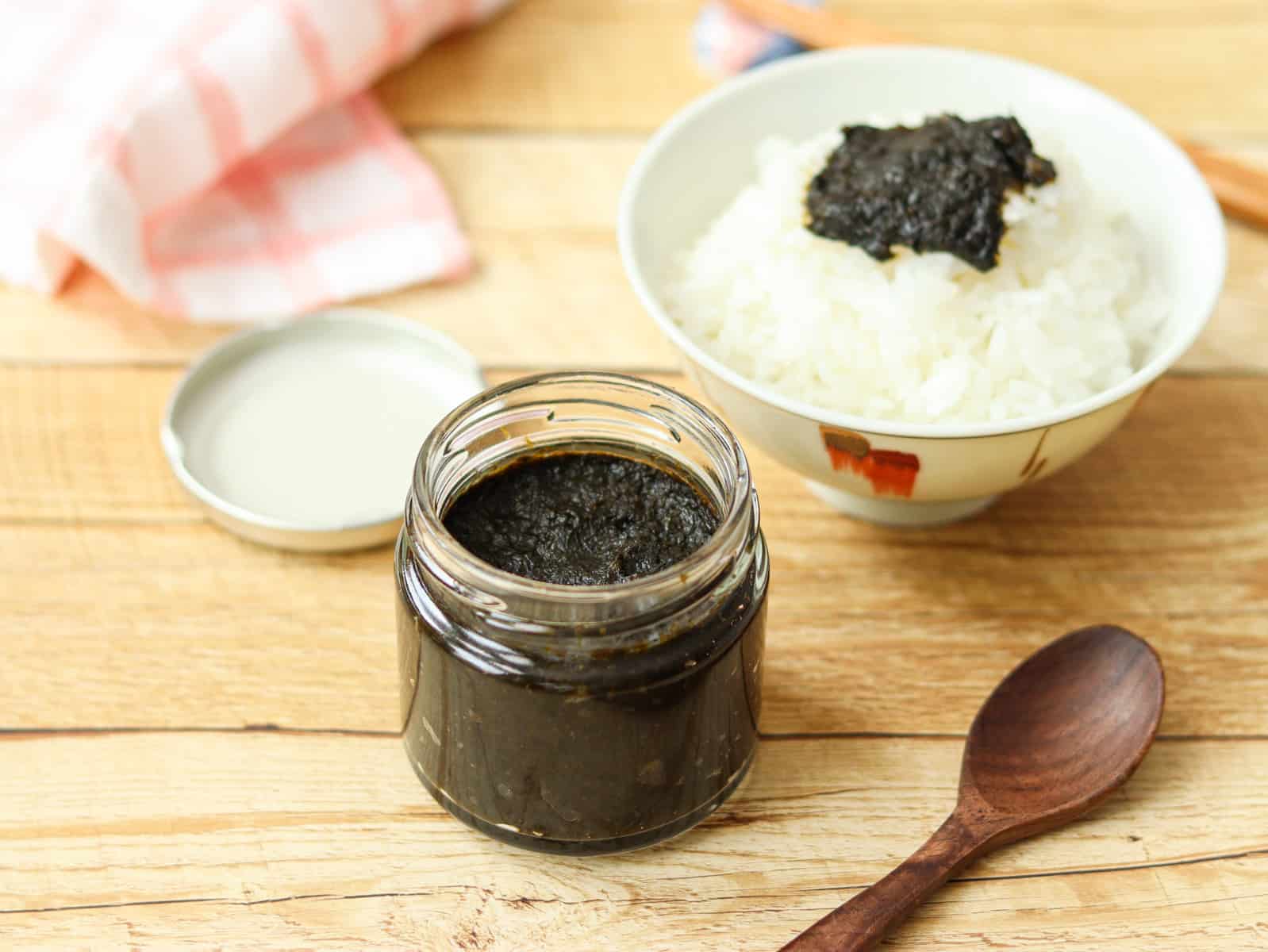
📋Step-by-step recipe
Ingredients
- 4 nori seaweed (full sheet)
- ⅖ cup dashi stock (I recommend using shiitake dashi, but you can also use awase dashi or other types of dashi.)
Seasonings:
- 2 Tbsp sake
- 2 Tbsp mirin
- 2 tsp sugar
- 2 Tbsp soy sauce
Instructions
🕒 Total: 15 mins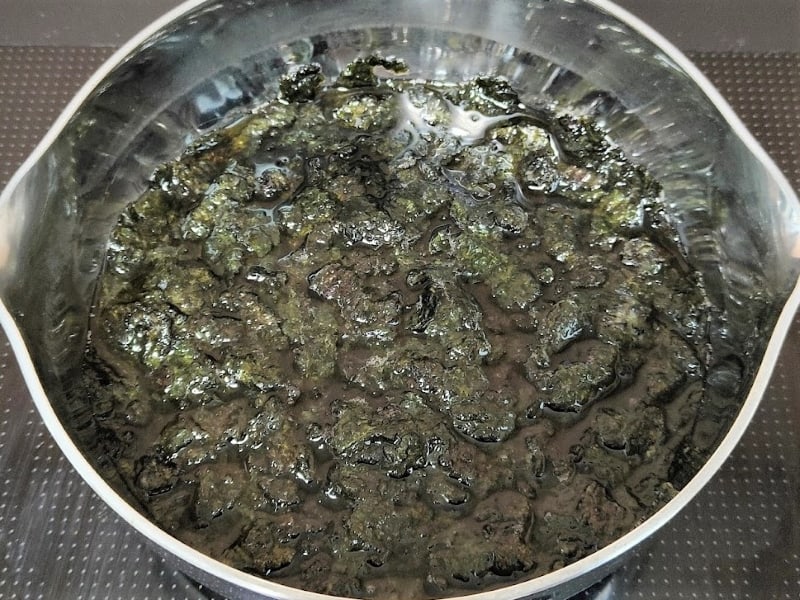
Step 1
Tear the nori seaweed into pieces and put them in a pot. Add dashi and the seasonings (sake, mirin, sugar, and soy sauce) to the pot, then let it sit for a few minutes to allow the nori to soften.
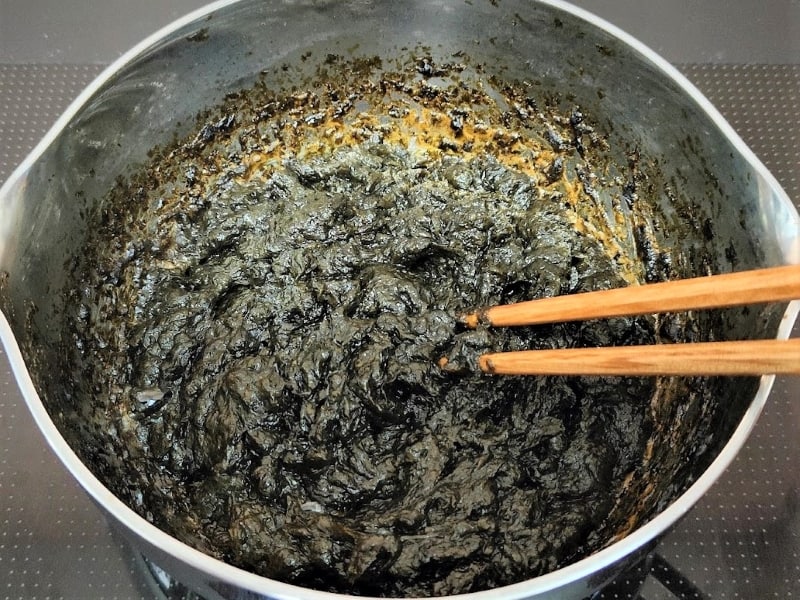
Step 2
Heat the pot over medium heat and simmer, stirring occasionally with chopsticks or a spatula, until most of the liquid has evaporated.
To store
You can store it in the refrigerator for up to a week.
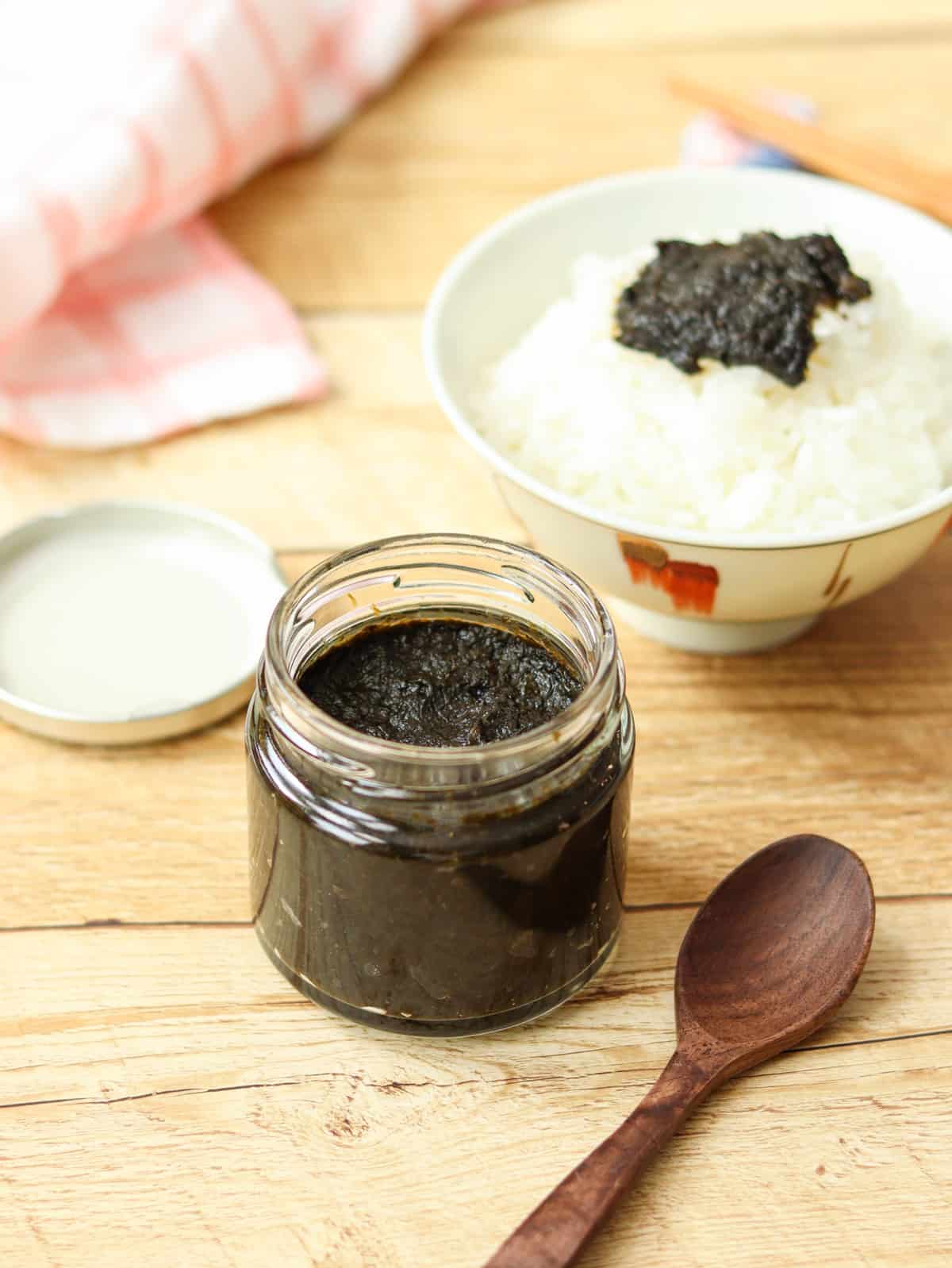
If you try this recipe, I’d love to hear what you think. Please consider leaving a review and star rating in the comments below. If you enjoyed it, I’d really appreciate it if you shared it with your friends.
More rice topping recipes you'll love
Recipe card

Nori no Tsukudani (Nori Seaweed Paste)
Ingredients
- 4 nori seaweed (full sheet)
- ⅖ cup dashi stock (I recommend using shiitake dashi, but you can also use awase dashi or other types of dashi.)
Seasonings:
- 2 Tbsp sake
- 2 Tbsp mirin
- 2 tsp sugar
- 2 Tbsp soy sauce
Instructions
- Tear the nori seaweed into pieces and put them in a pot. Add dashi and the seasonings (sake, mirin, sugar, and soy sauce) to the pot, then let it sit for a few minutes to allow the nori to soften.
- Heat the pot over medium heat and simmer, stirring occasionally with chopsticks or a spatula, until most of the liquid has evaporated.
Notes
- You can store it in the refrigerator for up to a week.




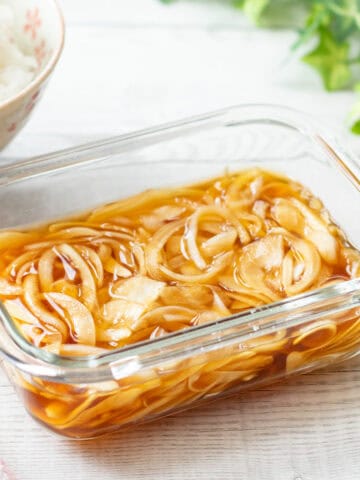
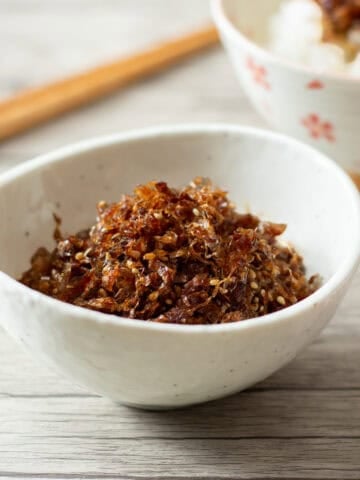
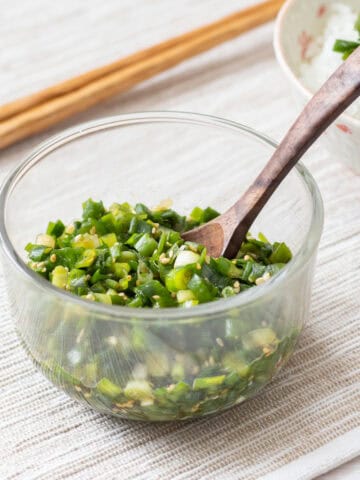
Leave a Rating and a Comment